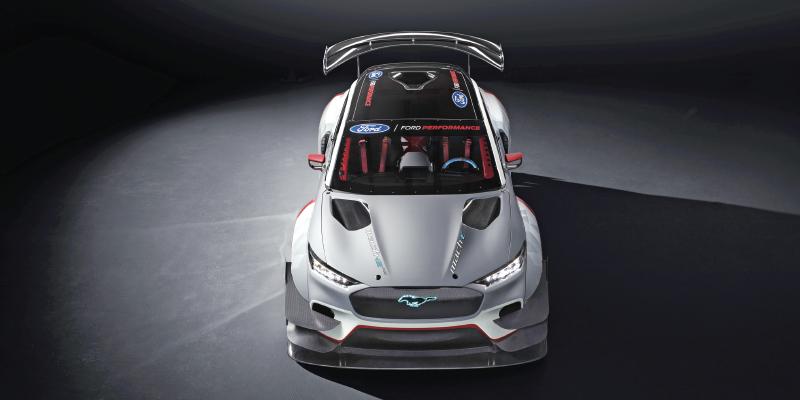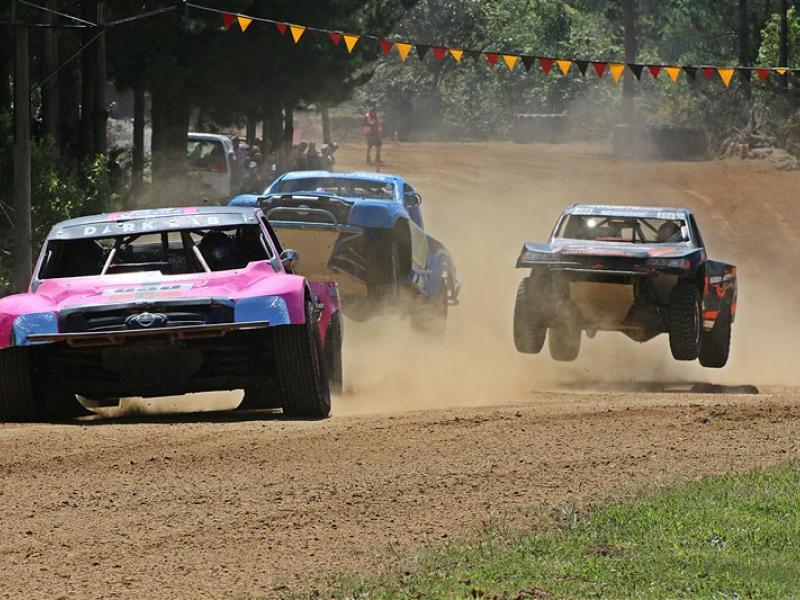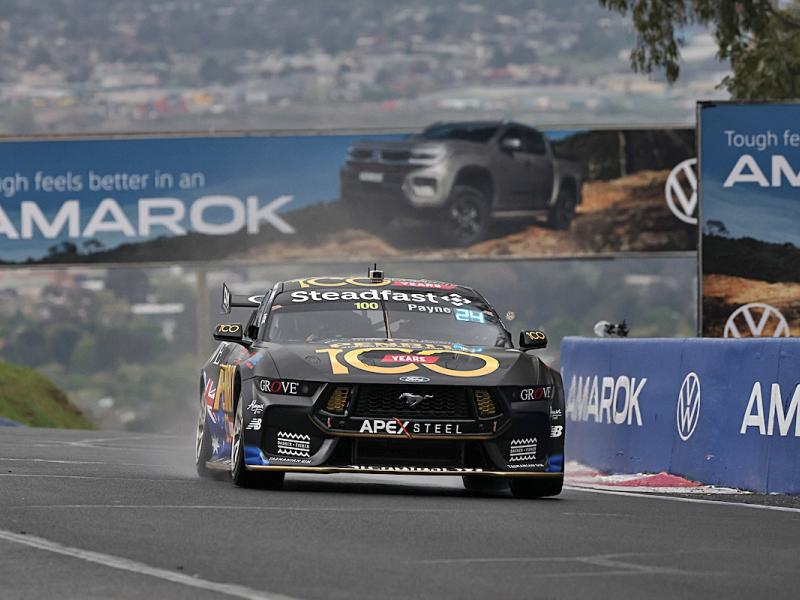We want peak horsepower of 1,400 – and make it electric.
Mission accomplished: Ford introduces Mustang Mach-E 1400, an all-electric road rocket that shows just how much performance can be harnessed without using a drop of gas. Coming hot on the heels of the 1,400-horsepower all-electric Mustang Cobra Jet 1400, this one-off Mustang Mach-E with its seven electric motors and high downforce is ready for the track, drag strip or gymkhana course – anywhere it can show how electric propulsion promises extreme Mustang performance.
Developed in collaboration with RTR and built off a Mustang Mach-E GT body-in-white, the prototype targets 1,400 peak horsepower. The chassis and powertrain work together for a multitude of setups offering capability unlike any other vehicle.
The Mustang Mach-E 1400 is the result of 10,000 hours of collaboration by Ford Performance and RTR aimed at bridging the gap between what an electric vehicle can do and what customers tend to believe it can do.
“Getting behind the wheel of this car has completely changed my perspective on what power and torque can be,” said Vaughn Gittin Jr., RTR Vehicles founder, motorsports champion and professional fun-haver. “This experience is like nothing you’ve ever imagined, except for maybe a magnetic roller coaster.”
Mustang Mach-E 1400 has seven motors – five more than even the Mustang Mach-E GT. Three are attached to the front differential and four are attached to the rear in pancake style, with a single driveshaft connecting them to the differentials, which have a huge range of adjustability to set the car up for everything from drifting to high-speed track racing.
“The challenge was controlling the extreme levels of power provided by the seven motors,” said Mark Rushbrook, motorsports director, Ford Performance. “Mustang Mach-E 1400 is a showcase of the art of the possible with an electric vehicle.”
The chassis and powertrain are set up to allow the team to investigate different layouts and their effects on energy consumption and performance, including rear-wheel drive, all-wheel drive and front-wheel drive. Drift and track setups have completely different front-end configurations like control arms and steering changes to allow for extreme steering angles in drifting. Power delivery can be split evenly between front and rear, or completely to one or the other. Downforce is targeted at more than 2,300 lb. at 160 mph.
The 56.8-kilowatt-hour battery is made up of nickel manganese cobalt pouch cells for ultra-high performance and high discharge rate. The battery system is designed to be cooled during charging using a di-electric coolant, decreasing the time needed between runs.
An electronic brake booster is integrated to allow series regenerative braking combined with ABS and stability control to optimize the braking system. Mustang Mach-E 1400 features Brembo brakes and a hydraulic handbrake system designed for drifting that integrates with the powertrain controls to enable the ability to shut off power to the rear motors.
Mustang Mach-E 1400, which is set to debut at a NASCAR race soon, serves as a test bed for new materials. The hood is made of organic composite fibres, a lightweight alternative to the carbon fibre that comprises the rest of the vehicle.






